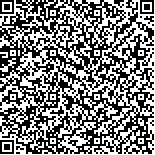本文已被:浏览 541次 下载 407次
Received:November 17, 2022 Published Online:August 20, 2023
Received:November 17, 2022 Published Online:August 20, 2023
中文摘要: 目的探讨卒中后肩痛(PSSP)患者与肩关节核磁共振成像(MRI)特征的相关性及影响因素,以期为PSSP精准治疗提供依据。方法选取2017年6月至2022年3月在南京医科大学第二附属医院就诊并拍摄患侧肢体肩关节MRI的PSSP患者83例,分析不同性别、年龄、偏瘫侧别MRI特征的差异,以及年龄、发病时间、MRI特征数量与肩痛程度的相关性。结果MRI特征示,PSSP患者存在冈上肌肌腱损伤(78.31%)、冈下肌肌腱损伤(13.25%)、肩胛下肌肌腱损伤(34.94%)、小圆肌肌腱损伤(3.61%)、肱二头肌长头肌腱鞘积液(炎)(78.31%)、肱骨头骨髓水肿(33.73%)、肩关节囊积液(86.75%)、滑膜增厚(9.64%)或骨化性肌炎(1.20%)。高龄患者较年龄较低患者冈上肌肌腱损伤明显增多(P<0.05),脑梗死患者较脑出血患者冈上肌肌腱损伤、肩胛下肌肌腱损伤、肱二头肌长头肌腱鞘积液(炎)明显增多(P<0.05);年龄、MRI特征总数与疼痛程度无相关性(P>0.05);PSSP发病时间与疼痛程度成正相关性(P<0.05)。结论肩关节囊积液、肱二头肌长头肌腱鞘积液(炎)、冈上肌肌腱损伤是PSSP患者MRI最常见的三个特征。高龄患者冈上肌肌腱损伤更多见;脑梗死患者冈上肌肌腱损伤、肩胛下肌肌腱损伤、肱二头肌长头肌腱鞘积液(炎)更多见。肩痛发病时间越晚,疼痛越剧烈。
Abstract:ObjectiveTo explore the features of magnetic resonance imaging (MRI) on post-stroke shoulder pain (PSSP) and the influencing factors of PSSP, in order to provide a basis for precise treatment of PSSP. MethodsA total of 83 PSSP patients were selected, who were treated and underwent MRI of the shoulder joint of the affected limb in the Second Affiliated Hospital of Nanjing Medical University from June 2017 to March 2022. MRI features were observed among different genders, ages and hemiplegic sides to analyze the associations of age, onset time and MRI characteristics with the degree of shoulder pain. ResultsMRI showed that there were 65 cases (78.31%) of supraspinatus tendon injuries, 11 cases (13.25%) of infraspinatus tendon injuries, 29 cases (34.94%) of subscapularis tendon injuries, 3 cases (3.61%) of teres minor tendon injuries, 65 cases (78.31%) of biceps brachii longus tendon sheath hydrops, 28 cases (33.73%) of humeral head medullary edema, 75 cases (86.75%) of shoulder articular capsule hydrops, 8 cases (9.64%) of synovial thickening and 1 case (1.20%) of ossifying myositis. The incidence of supraspinatus tendon injury in elderly patients was significantly higher than that in younger patients (P<0.05). The incidences of injuries to the supraspinatus muscle tendon and subscapularis muscle tendon and biceps tendon sheath effusion (tenosynovitis) in the patients with cerebral infarction were significantly higher than those in the patients with cerebral hemorrhage (P<0.05). There were no significant associations of age and MRI features with pain degree (P>0.05), however, the onset time of PSSP was positively correlated with pain degree (P<0.05). ConclusionShoulder joint articular effusion, biceps tendon sheath effusion (tenosynovitis) and supraspinatus tendon injury are the three most common features of MRI. These injuries are more likely to develop in elderly patients and the patients with cerebral infarction. The later the onset of shoulder pain occurs, the more intense the pain becomes.
文章编号: 中图分类号:R493 文献标志码:B
基金项目:江苏省卫生健康委医学科研面上项目(M2021068)
引用文本:
